
The exhibition is a retrospective of nearly four decades of work by the contemporary photographer Jaroslav Pulicar (*1954) from Brno. Although Pulicar is one of the most prominent current documentarists and was awarded the Association of Professional Photographers last year, only a few insiders are familiar with his work. The number of Pulicar’s exhibitions could be counted on one hand, and there are even fewer texts analysing his work. Only last year Pulicar’s photographs were presented to the wider public through two author publication. Jaroslav Pulicar is also known in Brno as a prominent figure in the contemporary photography space; he has been operating an apartment gallery 34 in Brno’s Botanical Street for more than a decade.
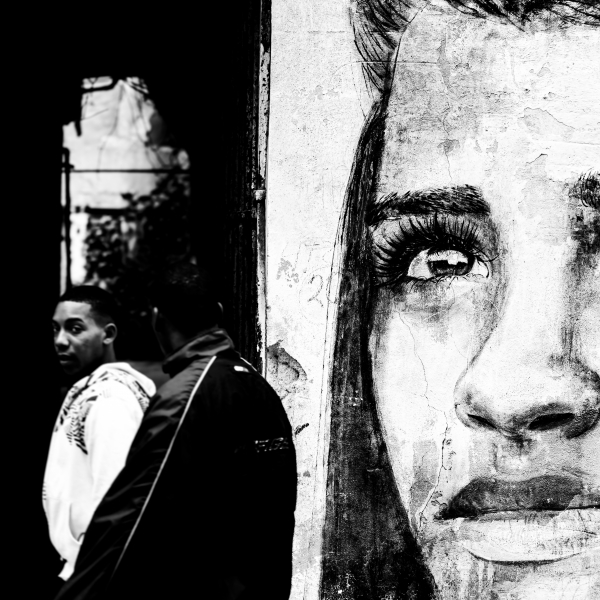
Presentation of photographs in Leica Gallery Café
The Art Photo-Group “StreetPhoto is not just a Click in the Street” was established in August of 2014 by Albert Pich, who invited famous Czech and Slovak street photographers such as Rudolf Baranovic, Jan Hlbocan and many others to moderate the group.
The purpose of the Art Photo-Group is to find truer and higher form of street photography and to find new inspiration …
The Group is meant for all photographers who wish to creatively develop their art. The Group’s goal is to give its members space to debate about and publish their street photographs which did not come about through just a click in the street.
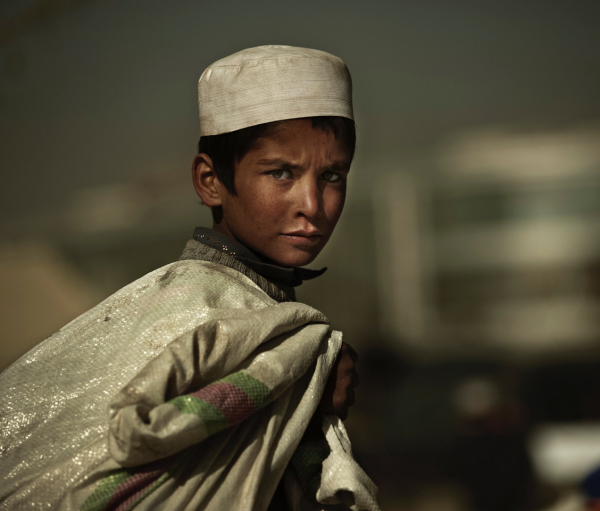
The Czech photographer Jiri Turek’s series shows us Afghani people’s everyday life. This collection of colour images is not a photojournalistic attempt to document a war zone; it’s aim is to show Afghanistan as a place of its inhabitants’ everyday joys and sorrows.
His aim wasn’t to capture the war. Despite that, or possibly because of that, Turek’s photographs are the truest and rawest insight into the lives of people who didn’t choose war yet live within it. Ordinary people. The photographs are filled with emotion, fear, barebone life, everydayness, and guilt in the eyes of every person who was lucky enough to wake up alive that morning in Kabul. Photographs of children who grew up too fast for them to still have mischievous or youthful grins. Photographs of boys who are letting out their emotions playing football. Images of women whose faces we rarely get to see, images of men who don’t have time to spare for happiness. Soldiers and quirky grandfathers…
“Every day I was truly pleased with the photographs I created, yet the pleasure was mixed with sadness over what I witnessed that day. Kabul was ravaged by war at the time, but people had different things to worry about, ordinary things. They needed food, drink, and heat. That was and is my message from Kabul: ‘Even here people live’,” says the photographer Jiri Turek.
Despite the photographs being created in 2011, the twenty large-format photographs of Kabul’s inhabitants resonate nowadays more than ever.
Karolina Kovarova
Jiri Turek (*3. 5. 1965) has been concentrating on his freelance work for the past 30 years during which he gained an immense amount of experience as well as insight, precision, and perfect photography technique. In addition to his portrait, reportage, and commercial photography work Turek is returning to the original craft of black and white photography by exploring certain “forgotten” techniques such as the “lithprint”. He creates cover pages for prestigious magazines and fashion editorials, as well as for CD covers. Turek is also well known for his photographical contributions to successful marketing campaigns.
(www.jiriturek.com)
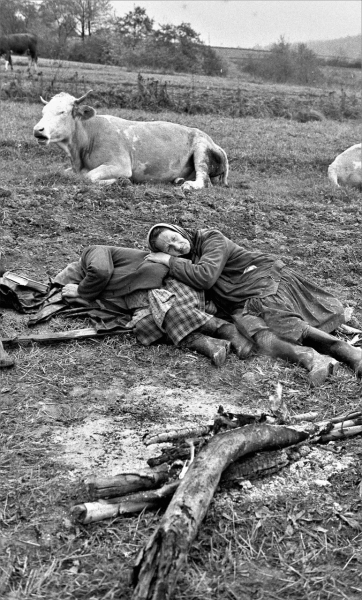
In 1971-1981 Pavel Vavrousek documented Nova Sedlica, the easternmost village of then Czechoslovakia. He captured one of the last islands of rural togetherness where people lived traditional lives only minimally different from ones their ancestors led, in ever-present negotiations with nature. Where people worked with farm animals and their time unfolded in the rhythm of alternating seasons and Orthodox holidays. Vavrousek photographed a community not yet affected by unifying globalization. He noticed the vanishing and endangered and captured it while it lasted. The last village. For the next four decades, the photographs laid unseen in an archive.
Pavel Vavrousek (*1946) started photographing at the age of twenty-three thanks to his friend Pavel Stech. First, Vavrousek documented his friends hiking in the nature or during their weddings, and later he was like many drawn in by the world of the Romany people. He discovered his life’s theme in the easternmost north of Slovakia, in Bukovske vrchy below the Kremenec hill. In the fall of 1971, he visited the area for the first time when hiking with two friends. Vavrousek was fascinated by the landscape, traditionality of the village, Orthodoxy and hospitality and friendliness of the locals. As an introvert, he tended to struggle with approaching others with a camera and ask for their permission to photograph them. But there he was able to photograph naturally, organically. Locals did not feel violated by being photographed; on the contrary, they were delighted that their lives were a subject of interest to a foreigner who decided to live among them. “Here in the Czech Republic, it was much harder to come close to people than there. I’ve spent all my allocated photography time in Nova Sedlice. I was most drawn to the sense of otherness – it would’ve been hard to find a place like this in the Czech Republic, even then.” He continued visiting the family of “aunt” Zimovcakova for the next ten years. “It was important for me that the locals followed an Orthodox, i.e. the Julian calendar. It was inconceivable to me that I would not spend Christmas at home. This way I could spend Christmas home with my family and then leave to photograph Orthodox Christmas.”
In the post-war period and loss of the Subcarpathian Russia, untouched rural life in its authentic and true form could mostly be found in Slovakia only. Martin Martincek photographed Liptov’s mountaineers since the end of 1950s. The pursuit of an expressive visual shortcut and true reflection of the mountaineers’ hard lives lead Martincek to abstract graphism. Marketa Luskacova found her Slovakian village, one of the last islands of traditional rural life in Horehroni, at the southern foot of the Low Tatras. At that point she has already been photographing Slovakian fairs for four years. Within Czech Republic the rural setting has been systematically explored only in Krnovsko and Bruntalsko by Gustav Aulehl, or by Dagmar Hochova as a part of her magazine reportages. Miroslav Pokorny photographed the village Bukova and its surrounding Novohradsko in 1973-1988, and in 1978 he began focusing on the rural Bruntal region, the home of Jindrich Streit, then a director of a small school.
The hilly region of northeastern Slovakia is one of the most documented parts of Slovakia. Following Pavel Vavrousek, the region has been immortalized by local photographers who periodically returned there such as Jozef Ondzik and Tomas Leno (Starina, 1981-1986 and Rusins 1996-2003) or Lucia Nimcova. In the last three decades, the region has welcomed the repeatedly visiting Slovakian reportage and documentary photographer Andrej Ban.
Vavrousek had always been a city man, something which he was humbly and acutely aware of while visiting the rural region. His storytelling makes it clear that when entering the region, he found the place of his life’s feeling. He was struck by the villages with no asphalt roads, where everyday life was interconnected with nature, animals, and the world of Orthodoxy. He was drawn to the distinct faces of the locals, to the landscape without wires or electric poles, to the old cottages with no antennas. Coming from the atmosphere of moral decline of the normalization period, he was refreshed by the hard life lived in the virginal nature in accordance with deep faith.
Pavel Vavrousek captured the imagery of vanishing rurality. He photographed an environment not yet disturbed by the unifying globalisation and tourists, not only full of rich folklore. He aimed to capture the one, original, perhaps even the last village, and the last villagers. He focused on the disappearing and endangered and captured it while it still lasted. He presents us with a timeless image of a traditional village. He shies away from politics and negative aspects of the life such as alcoholism, poor housing conditions, lack of access to medical care, poor transport connection, creeping gentrification, and migration of the young toward cities. Vavrousek is not a socio-critical photographer, he doesn’t want to expose the viewers to the poverty and difficulty of the village life, but he seeks to expose us to a particular lifestyle which to a certain extent harmonizes with his values. To capture it while it lasts. Currently this photography collection presents Vavrousek as a supporter of the humanistic documentary values, which have had many followers in the Czech space since the mid-50s exhibition Family of Man. Vavrousek’s “Family of Man” resided in one of Bukovske vrchy’s village, at the then border between Czechoslovakia, Poland, and Soviet Union. The collection presents us with a raw world of the rural village which gives an insight into what life could have been like in a central European village many decades ago through themes of relationships with animals, agriculture, life in the rhythm of the seasons and Christian holidays and festivities. Throughout the process of photographing, Vavrousek aimed to consciously capture the life lived in accordance with the yearly cycle of spring-summer-autumn-winter, and in accordance with the Orthodox calendar. The editorial traces one year in the rural village from spring to the end of winter, as centred around the seasons and holidays determined by Christian milestones and nature’s processes.
After several years of photographing Nova Sedlice, in 1975 Vavrousek was admitted to FAMU, then the only Czech university offering standalone photography education. He attended the university while working. The same year marked the start of Vavrousek’s childhood friend’s Pavel Stecha’s seminars and documentary photography exercises at FAMU. Stech’s students include a strong generation of documentarians, amongst others Jaroslav Barta, Jan Reco, Dusan Simanek, Iren Stehli, Jan Maly, Jiri Polacek or Jaromir Cejka. They were all connected through the use of reportage candid shots, the emphasis on black-and-white imagery and refusing to interfere with the reality taking place in front of the camera. Vavrousek also takes over Stech’s photographic distance, a certain pictorial candour, and an emphasis on condensed description. As an author he wants to keep a certain distance and remain unseen behind the simple composition. He values quietly serving, introducing the viewer to the villagers’ customs and ceremonies and to capture them while the people who perform them are still alive. As if he wanted to combine the sober documentary poetry with a balladlike testimony.
Pavel Vavrousek’s work has until now only been recalled in a short note by an art historian Anna Farova written for Vavrousek’s exhibition in Prague’s Drama Club (Cinoherni klub) in the spring of 1981: “Pavel Vavrousek photographs village life seriously and meticulously in the form of distinct and clearly demarcated photographic imagery. Their atmosphere is one of finality and festivity. The quest to the village can become an unconscious seeking of something exotic, the pursuit of capturing something unusual and new is the first layer of mapping, which is followed by true understanding. The long-standing focus on this theme tends to overlay the initial exotic and aesthetic excitement. The author has been photographing in Slovakia’s Nova Sedlice, 900km from Prague, since 1971. Orthodox customs and traditions are still maintained here, which form the basis of the photographer’s capturing of the Christmas holidays. Vavrousek’s narration is not drawn out, he succinctly summarises into essence-like images that give rise to photographs classically balanced in their form and content.” As per the quote, the 1981 exhibition presented the author’s work capturing the village’s Christmas. In his subsequent and now legendary exhibition 9 & 9 in Plasy, Vavrousek introduced a selection of horse photography, which he re-exhibited during his independent exhibition at the Nerudovka Gallery.
Through the exhibitions at the foyer of the Drama Club and at Plasy in 1981, Anna Farova placed Pavel Vavruska alongside the strong documentarian generation such as Libuse Jarcovjakova, Dusan Simanek, Borivoj Horinek, Jiri Polacek, Dusan Palka, Pavel Stecha, Ivan Lutterer, Jaroslav Barta, Iren Stehli, Ivo Gil or Jindrich Streit, most of which graduated FAMU in the 1970s. With the culmination of his studies at FAMU where he presents his Nova Sedlice collection as his thesis, Vavrousek’s photography of the last village ends. And without knowing it at the time, so does his interest in documentary photography. After making an appearance in a few foreign photography magazines, the Nova Sedlice collection disappears from the photography scene for many years. After graduating from FAMU Vavrousek mostly focuses on his work and family, he returns to photography only sporadically to capture his other hobbies such as hiking, or to immortalise his bell ringer friends. “In the spring 1981 I graduated from FAMU. It was clear that I won’t be able to make a living as a photographer. Especially as a documentarian, and when it comes to commercial or architecture photography that made a living for Pavel Stecha was something I was neither good at nor interested in. I enjoyed my work at the Telecommunications Research Institute very much. I also got married, my son was born… Perhaps I didn’t have the right Koudelka-esque lifelong verve to pursue photography in spite of everything.”
When the borders opened after 1989, most Czech citizens travelled to first experience previously practically inaccessible western countries. In contrast many photographers such as Iva Zimova, Josef Koudelka, Jaroslav Pulicar, Pavel Hroch, Jarmila Simanova or Karel Cudlin headed east. They photographed in Poland, Transcarpathian Ukraine, and mostly in the Romanian Banat, a village not yet touched by tourism or large agricultural and animal production cooperatives, a village that attracted the photographers not only with its originally Czech inhabitants, but also with its rudimentary and to an extent still authentic relationship with nature and faith. It was the same yearning that drew Pavel Vavrousek to Nova Sedlice two to three decades earlier.
Tomas Pospech, curator
Pavel Vavrousek was born on August 8th, 1946, in Prague. He is a graduate of the Secondary Industrial School of Electrical Engineering (1964) and FAMU’s extraordinary photography programme (1975-1981). He was employed at the Telecommunications Research Institute in Prague from 1964. He focuses on photographic documentary from 1971. At first Vavrousek photographed hiking trips, and in addition to his series on the Romany people he created a collection from the science institute showcasing a laboratory with animals, or a medallion of the painter Karel Chaba. His long-standing theme throughout 1970s has been the Ruthenian village Nova Sedlice, the easternmost locality of then Czechoslovakia. He presented the collection of Nova Sedlice photographs as his thesis at FAMU and thanks to the curator Anna Farova showcased it to the public at the Drama Club and at the join exhibition 9 & 9 in Plasy.
Tomas Pospech (*1974) is a university pedagogue, photographer, art historian and curator. He graduated from the FPF Institute of Creative Photography of the Silesian University in Opava (1992-1998), and studied art history at the Faculty of Arts of Palacky University in Olomouc (1992-1995) and Faculty of Arts of Charles University in Prague (1995-1999). Since 1997 he is an associate professor at the FPF Institute of Creative Photography of the Silesian University an Opava. He is also the curator of the Museum of Applied Arts in Prague’s photography collection.
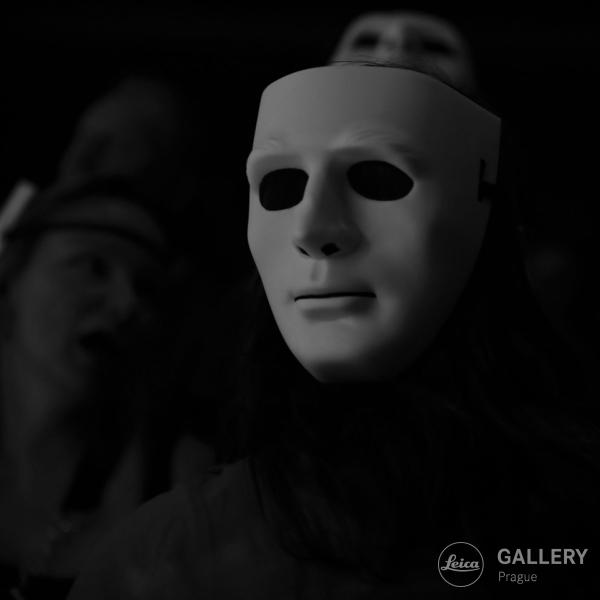
The Art Photo-Group “StreetPhoto is not just a Click in the Street” was established in August of 2014 by Albert Pich, who invited famous Czech and Slovak street photographers such as Rudolf Baranovic, Jan Hlbocan and many others to moderate the group.
The purpose of the Art Photo-Group is to find truer and higher form of street photography and to find new inspiration …
The Group is meant for all photographers who wish to creatively develop their art. The Group’s goal is to give its members space to debate about and publish their street photographs which did not come about through just a click in the street.
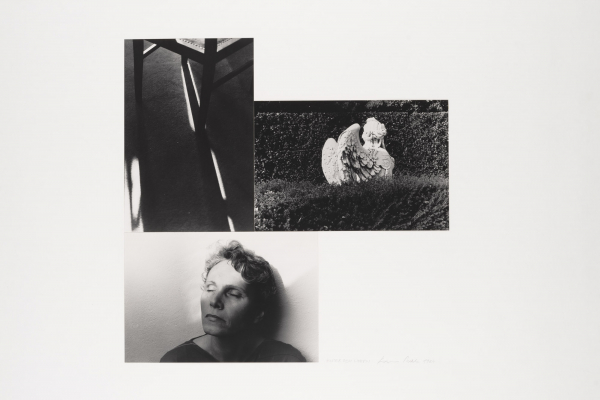
Karin Mack is an exceptional Austrian photographer who began analysing her own life situation and image in the early 1970s. The focal point of her photographic journey is the quest to find the unique yet versatile essence of oneself.
With a degree of irony Mack’s work calls back to the stereotypes of city life and transforms them into her own novel imagery. The stereotypes of women’s drab and mechanical chores are critiqued and through photographic construction and deconstruction Mack demonstrates the end of an illusion of women’s harmonious subservience, and the act of liberation from it. The exhibition will showcase a range of thematic, mostly autoportrait, collections from 1970s and 1980s, as well as recent work from the last decade which resonates with themes of age and care. In this way, the Leica Gallery Prague exhibition of Karin Mack’s work will introduce viewers to the Austrian photographer’s art in a wide temporal and thematic range.
Anna Vartecka, Vendula Fremlova, curators
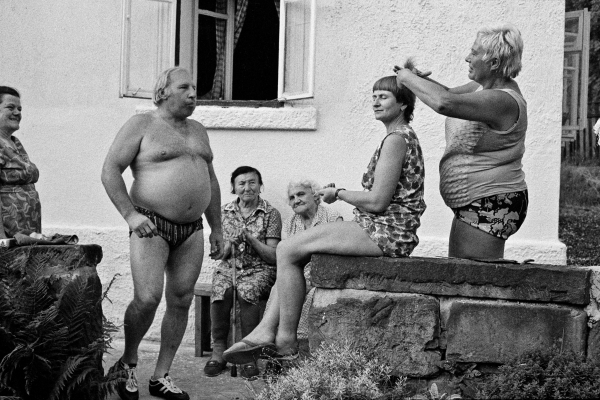
A retrospective exhibition of the Czech photographer Milon Novotny who would have celebrated his 90thbirthday this year. Novotny, who died in 1992, is considered a pioneer and outstanding representative of the 20th century Czech humanistic photography. Novotny was a photographic poet of everyday life, seeing and capturing deep human contents in seemingly banal scenes.
Milon Novotny (1930 – 1992) belongs to the generation influenced by E. Steichen’s legendary exhibition The Family of Man. Similarly to H. Cartier-Bresson, his photographs were exclusively black and white, he worked solely using a Leica camera and was a practitioner of the so called “decisive moment”. Although we can find photographs capturing the 1968 occupation of Czechoslovakia or the funeral of Jan Palach amongst Novotny’s work, his main focus was not reportage. Novotny was a photographical poet of the everyday, his photographs beam with empathy for the situation in front of his camera, with the ability to see beyond the seeming everydayness and his talent to rapidly identify the most fitting moment and detail.
Milon Novotny’s family of origin was a simple and rural one; his childhood was set in his hometown Stetovice in Moravia. Later he commuted to a grammar school in Prostejov. In his final year of high school he fell very ill with a lung disease and spent a year recovering in Novy Smokovec. It was in this period of existentialist uncertainty that he received his first camera; in that moment, his future was more or less decided. His first exhibition took place in 1956 in Olomouc. The young photographer travelled to Prague to ask the then sixty year old Josef Sudek for help with selecting photographs and writing Novotny’s exhibition a recommendation. A lifelong friendship developed between the two photographers and thanks to Josef Sudek, Milon met the prominent photography scholar Jiri Jenicek who immediately recognized exceptional talent in the young keen photographer. In 1957 Milon moved to Prague permanently, married the beautiful seamstress Alena and began collaborating and publishing in Literary and Theatre newspapers and magazines Theatre and Culture. He captured the beginnings of Laterna magika, photographed in the Na Zabradli theatre and later alongside with the painter and friend Libor Fara created an original and modern style to the Cinoherni (Drama) Club and its propagation materials. He published around five hundred photographs yearly with most of his royalties spent on travelling. Sixties were Milon’s most fruitful and successful life period that culminated in the now legendary publication London in 1968.
In the 70s and 80s, Literary newspaper to which Milon contributed for years ceased to be published and his photographs gradually disappeared from the pages of other newspapers and magazines. Milon Novotny was relegated to the sidelines like many other prominent figures of Czech culture and he was barred from photographing in theatres. Spending most of his time with his family in their Prysk dacha, he photographed the countrymen from this village in the north of Czech republic, which formed the focus of his work during the normalization period. He made a living by working with the Association of Czech Composers and Concert Artists, namely by portraiting musicians, which didn’t come close to fulfilling his creative ambitions. Nevertheless, even these photographs reveal a sensitive photographer’s touch. The extensive set of portrait negatives is currently stored in the archives of the National Museum.
After the Velvet revolution in November 1989, Milon Novotny was again travelling the world. He celebrated his sixtieth birthday and it seemed as if the upswing of his photographic potential was unstoppable. Unfortunately, he was only granted another two and a half years of life. The few magnificent photographs that he brought back from his last few journeys are a proof that he upheld the reputation as one of the most prominent Czech documentary photographers until his last days.
Dana Kyndrova,curator
1930 Milon Novotny is born on the 11th of April in Stetovice in Hanakia. His father is a locksmith working all life for the sugar factory in the neighbouring town Vrbatky. His mother occasionally lends a hand with field work while raising a son and a daughter.
1948-49 After turning eighteen, Milon falls ill with an infectious joint rheumatism and a lung disease. Instead of completing high school he spends a year rehabilitating in High Tatras. He is enchanted by the surrounding literature and visual art. He begins photographing on a borrowed camera.
1954 Beginnings of serious work; Milon photographs the activities painters usually busied themselves with before photographic technology allowed for rapid exposure.
1956 Exhibition debut in Olomouc, the historical metropolis of Milon’s home Moravia. His work is an upsurge for the Gallery of the Union of Czechoslovak Fine Artists. The catalogue text is written by more than a decade older colleague Jiri Janecek, who considers Novotny a homo novus. Janecek also recommends Novotny to his peer Josef Sudek. This gives rise to a years-long friendship.
1957 The weekly magazine Culture publishes Novotny’s photograph on its title page. Novotny relocates permanently to Prague.
1958 On June 5th Novotny marries Alena Hronikova. He becomes a candidate of the Union of Czechoslovak Fine Artists. He switches from the classical Rolleiflex camera and the negative format 6x6cm to a film roll Leica. From late 50s Novotny photographs for a wide range of magazines and documents theatre for more than two decades.
1962 First son Marek is born.
1964 First short trip to London.
1965 Beginning of intensive collaboration with the recently founded Cinoherni klub (Drama club) theatre.
1966 Novotny is accepted as a full member of the Union of Czechoslovakian Fine Artists. He contributes substantially to the collective image book New York. Throughout mere three weeks he takes the majority of the London photographs.
1968 First publication of London. Expectations are high not only in London or Prague, where the work was initially published by the publisher Mlada fronta, but in other places across the globe. London soon disappears from the shelves of Czechoslovak bookshops and despite the high volume of initial prints – eight thousand – it can be found only rarely in the display cases of second hand bookshops. The work was not coveted only for its masterful photography; London was also a symbol of the free world. Novotny’s work on Prague Spring culminates with him graciously giving foreign newspapers the negatives capturing the August occupation of Czechoslovakia by communist armies led by the Soviets. The period of Novotny publishing more than 500 photographs annually is coming to an end.
1969 Novotny’s photographs from the funeral of Jan Palach, a student who burned himself alive in protest against soviet occupation, grow into a parable about the end of an extraordinary decade. In the 70s Novotny continues working with the Czechoslovak academy of sciences, and he photographs for the Union of Czech composers and concert artists. He mostly contributes photographs to the magazines Gramorevue and Musical Views. He is so self-critical that he destroys bespoke negatives after use.
1975 The album ČSSR (Czechoslovak socialist republic) is published, to which Novotny contributed with a multitude of black-and-white and colour photographs. The escalation of totalitarian repression following 70s and 80s means that London’s lightness and freedom cannot be repeated.
1989 Novotny finds himself in the streets of Prague again while photographing the Velvet revolution.
1991-92 Photographic journeys to the USA.
1992 After a brief illness, Novotny passes away in a Prague hospital on August 9th.
2000 The monograph Milon Novotny: Photographs arranged by Dana Kyndrova reminds Novotny’s flagship project London with more than a quarter of reproductions.
2010 The retrospective exhibition to what would have been the photographer’s 80th birthday is debuted in the Old Town Hall in Prague. Novotny’s creative humanism is demonstrated in the words of the critic Jiri Penas: “People captured in the photographs make one wonder what happened with their destinies, how did their lives unravel afterwards, what happened to them, if and how do they live.” (Where did all those people go?, Lidove noviny, 17. 4. 2010.)
2014 London exhibition in Leica Gallery Prague.
2020 The book Musicians 70s-80s containing previously unpublished photographs of important personalities of the Czech philharmonic is published by Kant.
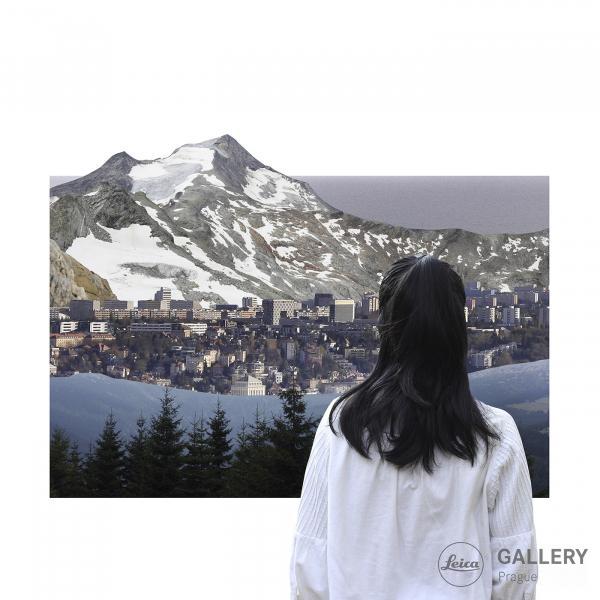
Presentation of photographs in Leica Gallery Café
The collage collection Universal is a playful experiment examining the universality of elements that form our cities, our world. The photographs mostly taken in Prague are deconstructed and later re-built into a new parallel space. Every element in this collection is comprised of multiple versions of itself which are juxtaposed in an egalitarian fashion without judgment. This gives rise to a city which is imperfect and non-pristine, but is open, without prejudice and racism, where different cultures and social forces freely mix.
I have adored collages since I was a child, and the infinite possibilities of this visual play and it’s meanings fascinate me to this day. The disassembly and re-construction of an image gives rise to many stories and reflections. For this collection, the questions of “What is the universal essence of a city and how can I define it” emerged. For me a city isn’t comprised of only streets, stones, street lamps and houses, but it is also formed by nature and most importantly by people who give cities meaning and life. After all, even trash photographed on the streets can spark imagination.
Michaela Pospisilova Kralova, author
Michaela Pospíšilová Králová is a freelance graphic designer, illustrator and photographer. Born in Prague in 1982, she began her training at the Secondary School of Textile Arts and then studied book design at the Hellich Higher Vocational School of Graphic Arts. In 2012 she completed her bachelor studies at Opava’s Institute of Creative Photography.
Michaela expresses herself through a wide range of artistic styles; reveling in the possibilities that the blending of photography, painting, drawing, graphic design and embroidery open up. She loves photography for its ability to clearly present the initial objective, for the function of the human memory assigned to it. She also appreciates its openness to further changes and interventions. Michaela works with the photographic archive for a long time. Following her own creative path, rather than passing trends, her work takes its inspiration from the themes that surround her and resonate within.
In 2012, Michaela was awarded the ‘Prize of the Leica Gallery Prague’ (as part of its Frame competition). Named as one of the ‘10 Must-Know Contemporary Czech Artists’ by theculturetrip.com magazine in 2015.
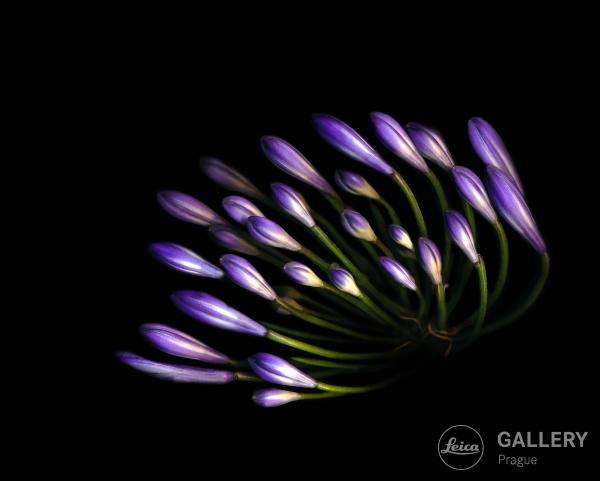
Presentation of photographs in Leica Gallery Café
Born in St. Catharines, Ontario, Canada, Anne first studied Interior Design at the International Academy of Design in Toronto and subsequently, photography, serigraphy, and fabric design at the Ontario College of Art, Toronto.
At that instant, she started to become intrigued with and eventually specialized in extreme forms of analog experimental photography and printing.
Even back then, her curiosity for finding original ways to treat and print negatives was apparent.
‘I have always been attracted to the combination of colours, patterns, and movement, questioning myself how I could distort these elements in unconventional ways. My present photographic work, I feel, is a modern form of collage in which my work process involves the adding and subtracting of data layers from my scanner and my Leica D-Lux 4. The combination of different levels of transparency does not solely give a final, surreal imagery composition but also results in each final image becoming an original. Similar to nature ́s configurations. Some of my final photographs consist of over 70 single images in total.’
‘My continual project on Botanical Portraits is something that I have been working on for the last six years. My main desire is to create one single image of each plant species and technically ‘freeze’ that first, extraordinary moment in which I saw that plant.’
To stop time.
‘With this project, I hope to redefine botanical photography to produce images that are modern, dynamic, and unprecedented. ́
www.aine-photography.com
instagram@annehoerter
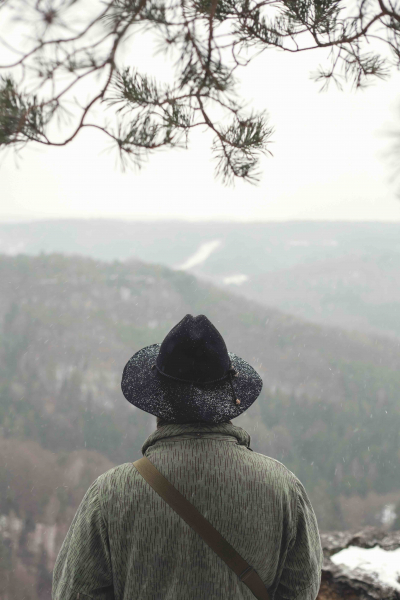
The photography collection is an homage to all were and stayed young, had wanderlust in their hearts and were drawn to sleeping under the stars. Regardless of whether they called themselves tramps, woodcrafters, wanderers, vagrants, cowboys or whether they eventually fastened a satellite to their roofs, they all became a part of almost exclusively Czechoslovak phenomenon of tramping, which is considered to be Czechia’s largest subculture.
The project captures the tramps’ lives in Bohemia and Moravia with the aim to document this specific subculture, since there is currently no comprehensive visual testament of this Czech phenomenon. The project is akin to field research, photographed across various regions of the Czech republic. Tramping, inspired by the League of Forrest Wisdom, woodcraft, scouting and America’s Wild West, became Czechoslovakia’s alternative movement, bitterly tolerated by the time’s socio-political regime. The term tramp or wonderer is on one hand based on Jack London’s novels’ depictions of an individual not abiding by societal norms and living on the fringes of society. On the other hand, it is a movement based on friendship, togetherness, strong connection with nature and distancing oneself from a consumerist lifestyle and the bourgeoise. Due to the changes in societal norms and political regime, the movement underwent a transformation and a revival, and continues to exist in some form to this day. The culmination of the project is a book, exhibition and a short documentary film.
Tomas Pospech, the curator
Libor Fojtik (*1977) is a graduate of master’s studies at the Institute of Creative Photography at FPF Silesian University in Opava. In his freelance work he mainly focuses on documentary and arranged photography. His documentary collections originate from long term journeys in countries such as Japan, India, Russia, Vietnam, Mongolia, New Zealand and more. Some of his Czech series focus on themes of consumerism and societal change, environment, the absurdity of everyday life, etc. In 2007 Fojtik became a photoreporter for the ISIFA photoagency. He works as a photographer for the Hospodarske newspaper since 2009. In the past he taught yearlong courses and photography workshops for the Institute of Digital Photography in Prague. His series Absurdistan – my home won the first prize in the FRAME photography competition and first prize in Czech Press Photo 2010’s category Everyday life. He was among the 60 finalists in the international LUMIX Photofestival in Hannover, a competition of young photojournalists. He authored multiple independent and collective exhibitions across the Czech republic and Europe.
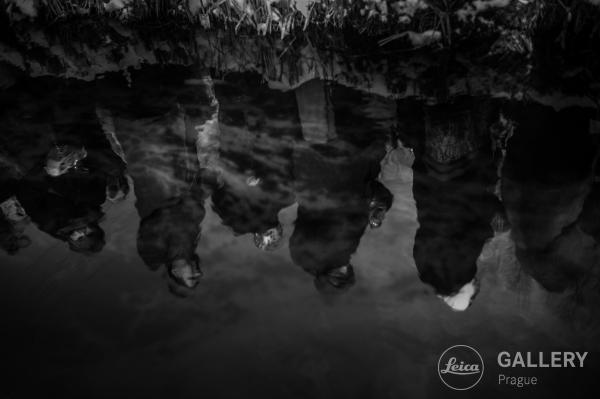
The Polish photographer Kuba Kamiński (*1985) repeatedly returns to Polish Podlesi and to Belarus where he immortalizes the life and work of local healers that call themselves “the whisperers”. Kamiński worked as a war photoreporter for a number of years and this collection of photographs is among one of his most personal projects. The series of black and white photos that combine reportage approach with visual symbolism won second place in The Best of Photojournalism competition and the Polish Grand Press Photo prize.
Shamanesses in the heart of central Europe
The whisperers believe they have a gift from God. They can banish pain, cure infections or remedy infertility. They are seen by people with nightmares, stutters or excessive shyness. By ones who need to avert curses or find peace for loved ones who passed away but whose souls haven’t found rest. Everybody has a different ailment. And each ailment needs a different incantation. The whisperers work through murmurs. Central Europe’s shamanesses follow in the footsteps of old traditions still alive partly due to the fact that Podlesí has always been on the periphery of interest. The historical region located on the Polish-Belarusian border is a place of deep forests where ethnicities, traditions, languages and faiths mix. As revealed by the icons in the corners, Eastern Rite prayer books and cemeteries filled by typical crosses, the whisperers avow themselves to the Eastern Orthodox Church. A church that distances itself from them, because it deems their rituals too pagan-like.
The whisperers cure anyone who asks for their help, regardless of religious affiliation. They only have one condition: the patient must have faith in the treatment. They require cooperation and willingness to use their imagination. The bizarre-looking rituals in which traditional natural materials such as linen, ash or wax are used have a single purpose; to symbolically materialize ailments or evil spirits who will then dissolve in water, dissipate into ash or burn through piece of linen ball placed on the patient’s head. It is first covered by a piece of cloth for the sake of safety. The majority of whisperers are old women, but exceptionally men can be found among them. They receive their regular patients in their homes, on pilgrimage or in other way special places. As a rule they don’t accept payment and refuse to curse or otherwise hurt anyone. They could, but it would be dangerous; curses often return to the one who wishes harm onto another.
The photographer Kuba Kamiński has been capturing Podlesí’s healers for a years. At first he was accompanied by an ethnologist fluent in the local dialect who became his guide. With time young Kamiński, most often carrying a Leica M9 camera, gained the locals’ trust and began returning alone. Kamiński worked as a war reporter for many years and this photograph collection is among his most personal ones. The two part series of black and white photographs that combines photojournalistic approach with symbolic images was awarded second prize in The Best of Photojournalism (2015) and Polish Grand Press Photo (2012) competitions.
Marie Iljasenko, curator
the wild east
old people, like apples on an apple tree, are waiting for the wind
they bury the young under the tree
there the earth will lick them, will lick clean
their wounds like stubble-fields
wounds, his mother told him, his grandmother told him
no one said a word
the others departed more slowly
as if fearing what would be taken from them
fearing they wouldn’t be buried right
they await anxiously
people in forests were howling, howling long into the night
Kasia Szweda: Bosorka, 2020
(translated by Lynn Suh)
Kuba Kamiński (*1985) comes from Warsaw. As a graduate of photography from Lodz Film School, laureate of the Ryszard Kapuściński award, Grand Press Photo and the Grant Prix price in the National Geographic competition, he is one of the most promising photojournalist of the Polish young generation. He got his start as a newspaper journalist, he worked for the Polish press office PAP and for the prestigious magazine Rzeczpospolita. Today he works at East News agency, amongst others. He profiled himself as a war reporter, known for his reportage collection capturing the war in Libya, annexation of Crimea and the everyday life in Gaza. He is also interested in societal themes, recently he introduced a black and white photograph collection based on Japan’s Tokyo that explores the changing attitudes to work. He is currently still working on his collection The Whisperers that won second prizes in The Best of Photojournalism (2015) and Polish Grand Press Photo (2012) competitions.
Marie Ilyashenko (*1983) is a poetess, writer and editor. Her 2015 debut collection Osip Headed South was nominated for the Magnesia Litera prize, in 2019 she published a collection St. Outdoor. She was nominated for the Dresden Prize of Lyric and the Vaclav Burian prize for her poetry work. She also writes short prose and translates from Polish, Ukrainian and Russian.
She lives in Prague.
Katarzyna Szweda (*1990) is a poet and photographer originally from Low Beskids. She’s a graduate of the Johann Wolfgang Goethe University in Frankfurt am Main. She is a winner of the projects “Połów 2017“ and “First collection of poems 2020” through which her debut poetry collection Bosorka was published.
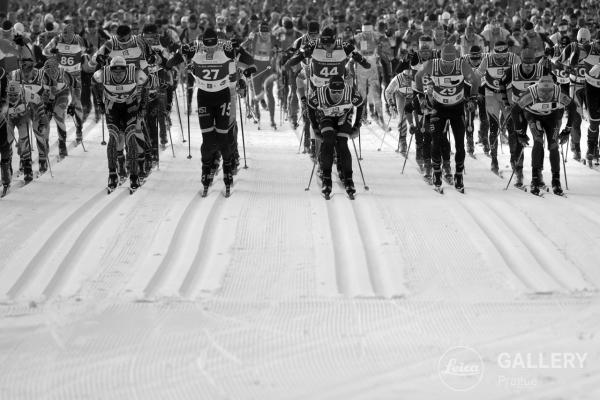
A group of six distinct personalities of Czech photography drew inspiration from the cross-country skiing competition Jizerska 50 that became the motive of their collective exhibition, each capturing the event through a unique visual conceptualization.
VIRTUAL TOUR TO THE EXHIBITION HERE
Jan Sibik (*1963) captured the event with his characteristic reportage style, although he has never actively pursued sport photography before. His black and white photographs treat the event as a story of a competition filled with struggles and joys experienced by its contestants. Quite the opposite, Marketa Navratilova (*1972) specializes in sport photography; she knows exactly which angle to use to create an emotionally charged photographic narration able to capture the unique dynamic of this winter sport. Jiri Langpaul (*1974) is the only one of the six who has been photographing Jizerska 50 for a number of years. He repeatedly returns to Jizerske mountains to take portrait photographs of the contestants; some of them amateurs, professionals, men and women of all ages and performance categories. Unlike Langpaul, Tomas Vocelka (*1965) perceives Jizerska 50 as a whole from a birds-eye view enabled by photographing from above from a small sport airplane. This gives rise to very strong compositions where the zigzagging snake of contestants forms a compact image with the surrounding nature. Daniel Hustak (*1990) has an entirely different approach to photography. He composes the overall feeling from singularities, maybe even redundancies, from small items and minimalistic aspects that all together form the competition. His photographs are visually minimalistic, very clean and devoid of any concrete people. The last artist of the six is an distinct personality of nude and fashion photography. Lukas Dvorak (*1982) doesn’t photograph at the event of the competition, he seeks to capture his perception of the race through the beauty and perfection that is a woman’s body; a body full of life and energy, life and energy which can also be found in each and every one of the contestants of this difficult and beautiful race.